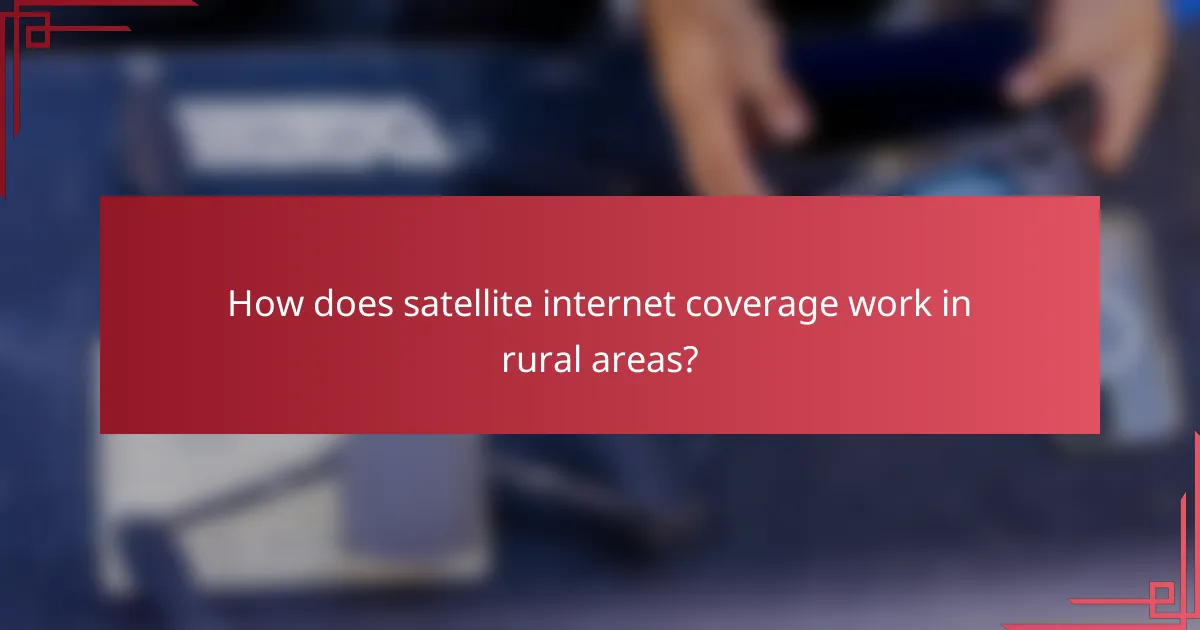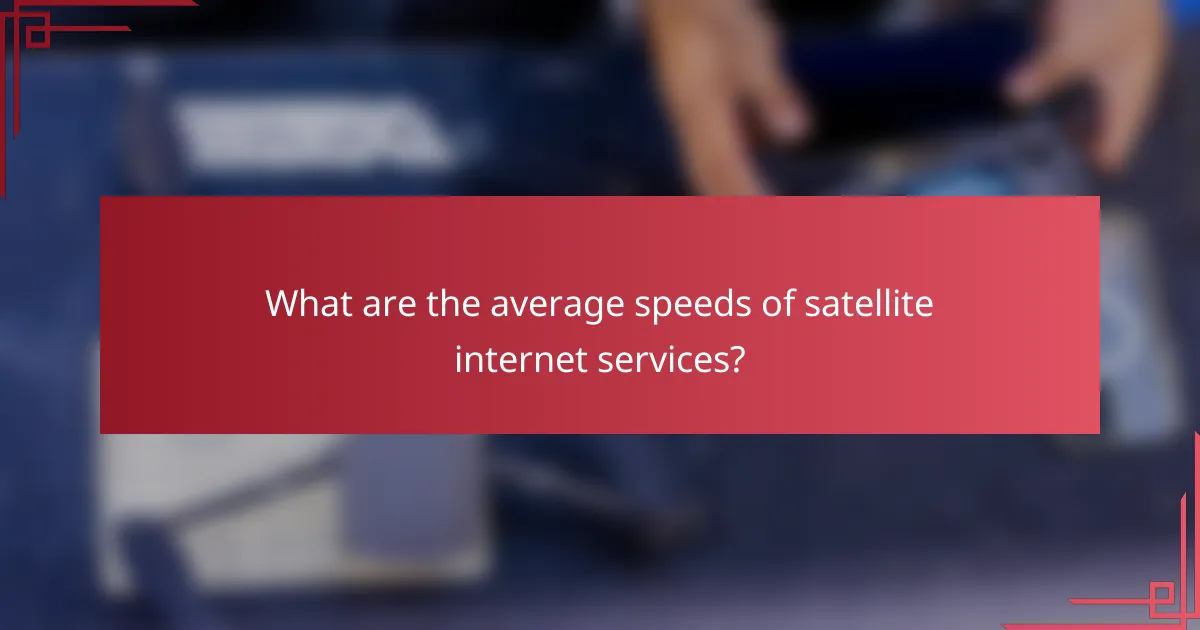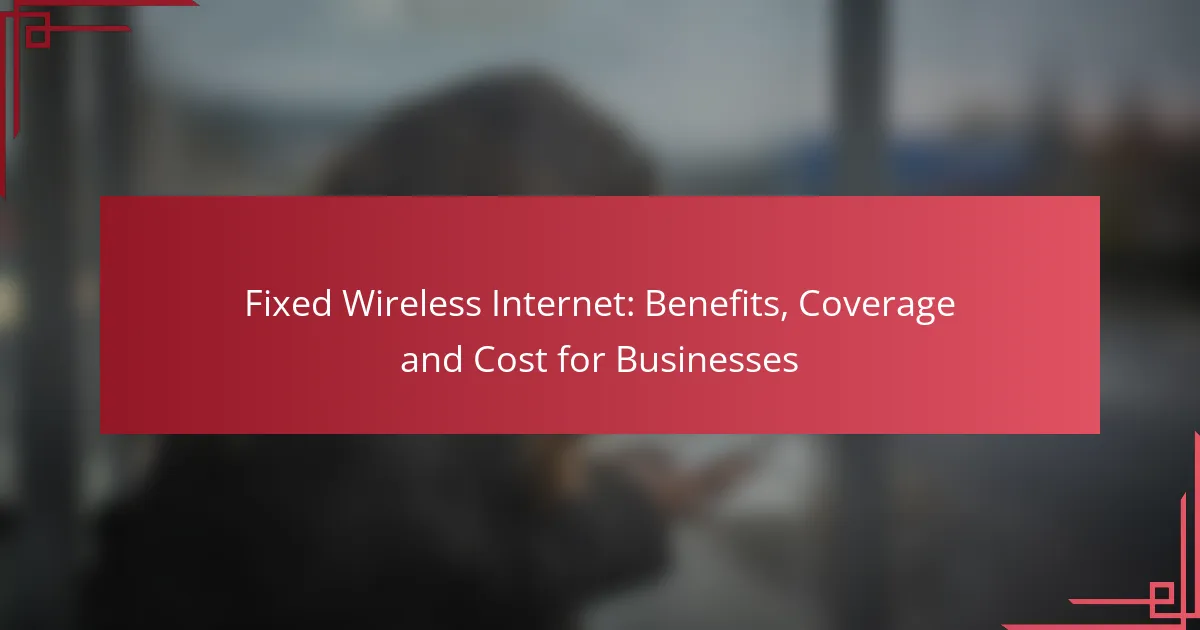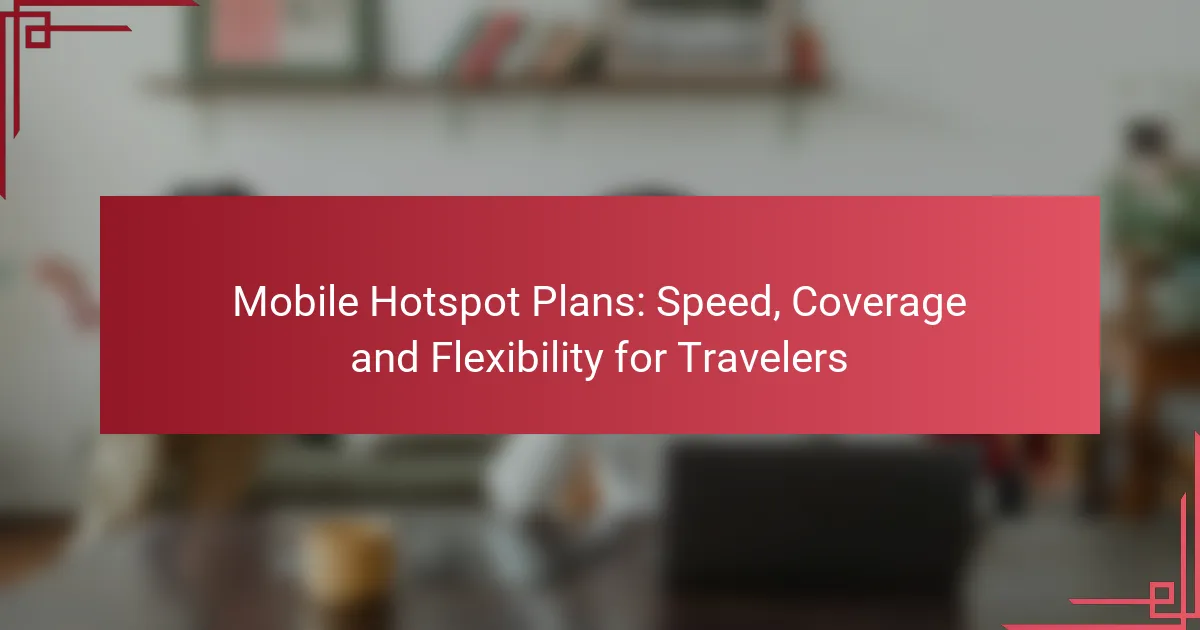Satellite internet has emerged as a vital solution for providing connectivity in rural and remote areas where traditional broadband options are limited. With providers like HughesNet, Viasat, and Starlink, users can access varying speeds and pricing plans, typically ranging from 25 Mbps to 150 Mbps. However, performance can be influenced by factors such as signal strength and weather conditions, making it essential to choose the right provider based on individual needs.

What are the best satellite internet providers in the US?
The best satellite internet providers in the US include HughesNet, Viasat, Starlink, Dish Network, and EarthLink. Each offers distinct features, speeds, and pricing, catering to various needs and locations.
HughesNet
HughesNet is known for its widespread coverage and reliable service. It offers plans with speeds up to 25 Mbps, making it suitable for basic browsing and streaming.
However, HughesNet has data caps that can limit usage, so it’s important to choose a plan that aligns with your internet habits. Users should consider their monthly data needs before committing.
Viasat
Viasat provides higher speeds compared to HughesNet, with plans offering up to 100 Mbps in some areas. This makes it a better option for households with multiple users or heavy streaming needs.
Viasat also has data limits, but they vary by plan. It’s advisable to review the details carefully to avoid overage fees, especially if you frequently use data-heavy applications.
Starlink
Starlink, operated by SpaceX, offers a unique satellite constellation that provides low-latency internet service. Speeds can vary widely, typically ranging from 50 to 150 Mbps, depending on your location and network congestion.
One of the key advantages of Starlink is its ability to serve remote areas where traditional internet options are limited. However, the initial equipment cost can be higher than other providers.
Dish Network
Dish Network offers satellite internet through its partnership with HughesNet, providing similar services and speeds. Their plans are often bundled with television services, which can be appealing for customers looking for a comprehensive package.
While the internet service is reliable, potential customers should be aware of the data caps and consider their usage needs to select the right plan.
EarthLink
EarthLink provides satellite internet through partnerships with other providers, offering a variety of plans that cater to different needs. Speeds can vary, but they typically offer competitive options for both urban and rural customers.
EarthLink is known for its customer service and flexible plans, making it a good choice for those who may need assistance or have specific requirements. Always check for availability in your area before signing up.

How does satellite internet coverage work in rural areas?
Satellite internet coverage in rural areas relies on satellites orbiting the Earth to provide connectivity where traditional infrastructure is limited. This technology allows users in remote locations to access the internet, though factors like signal strength and obstructions can impact performance.
Wide coverage across remote locations
Satellite internet offers extensive coverage, making it a viable option for rural areas that lack cable or fiber-optic connections. Users can often find service even in the most isolated regions, as satellites can beam signals over vast distances. This makes satellite internet an essential resource for remote communities and individuals needing reliable connectivity.
Providers typically offer various plans, allowing users to choose based on their needs. Coverage maps are available to help potential customers determine if service is available in their area, often showing a high percentage of rural locations are covered.
Signal strength and obstructions
Signal strength is crucial for optimal satellite internet performance. Factors such as weather conditions, terrain, and physical obstructions like trees or buildings can weaken the signal. Users should consider these elements when installing satellite dishes to ensure they have a clear line of sight to the satellite.
To maximize signal strength, it’s advisable to install the satellite dish on a high point, such as a roof or a pole, away from obstructions. Regular maintenance and checking for debris can also help maintain a strong connection. Users should be aware that heavy rain or snow can temporarily affect service quality, so having alternative options during severe weather may be beneficial.

What are the average speeds of satellite internet services?
The average speeds of satellite internet services can vary significantly depending on the provider and plan. Generally, users can expect speeds ranging from around 25 Mbps to 150 Mbps, with factors such as location and weather conditions influencing performance.
HughesNet speeds up to 25 Mbps
HughesNet offers satellite internet speeds of up to 25 Mbps, making it suitable for basic online activities like browsing and streaming in standard definition. However, this speed may not be sufficient for households with multiple users or for high-demand applications.
One important consideration with HughesNet is data limits, which can affect overall performance. Users should monitor their data usage to avoid throttling, especially during peak hours when speeds may decrease.
Viasat speeds up to 100 Mbps
Viasat provides higher speeds, reaching up to 100 Mbps, which can accommodate more intensive internet usage, including HD streaming and online gaming. This makes it a better option for larger households or users with higher bandwidth needs.
Viasat also has various plans that cater to different usage levels, so it’s advisable to choose a plan that aligns with your internet habits. Keep in mind that speeds may fluctuate based on network congestion and the time of day.
Starlink speeds averaging 50-150 Mbps
Starlink, operated by SpaceX, offers speeds that typically range from 50 to 150 Mbps, providing a robust option for users in rural or underserved areas. This service is particularly beneficial for those who require reliable internet for remote work or streaming.
Starlink’s performance can be affected by environmental factors, such as heavy rain or snow, so users should be prepared for potential interruptions. Additionally, the system requires a clear view of the sky for optimal connectivity, which may limit installation options in some locations.

How affordable is satellite internet in the US?
Satellite internet in the US typically ranges from moderate to high in affordability, depending on the provider and plan chosen. Monthly costs can vary significantly, and additional fees may apply based on equipment and contract terms.
Monthly costs range from $50 to $150
Most satellite internet plans in the US fall between $50 and $150 per month. Basic plans often provide lower speeds and data limits, while higher-priced options offer faster speeds and more generous data allowances. For example, a plan priced around $70 may provide speeds of 25 Mbps with a data cap, while a $150 plan could offer up to 100 Mbps with unlimited data.
Equipment rental fees
In addition to monthly service fees, many satellite internet providers charge equipment rental fees for the satellite dish and modem. These fees can range from $5 to $15 per month, depending on the provider. Some companies may offer the option to purchase the equipment outright, which can be a cost-effective choice in the long run.
Contract terms and hidden fees
Contract terms for satellite internet typically range from one to two years, and early termination fees can apply if you cancel before the contract ends. Additionally, be aware of potential hidden fees such as installation charges, data overage fees, or service call fees. Always read the fine print and ask the provider about any additional costs before signing up.

What factors affect satellite internet performance?
Satellite internet performance is influenced by several key factors, including latency, weather conditions, data caps, and throttling practices. Understanding these elements helps users make informed decisions about their satellite internet service.
Latency and weather conditions
Latency refers to the delay in data transmission, which is typically higher for satellite internet compared to other types of connections. This delay can range from low tens of milliseconds to several hundred milliseconds, depending on the satellite’s distance from Earth.
Weather conditions significantly impact satellite internet performance. Heavy rain, snow, or storms can cause signal degradation, leading to slower speeds or temporary outages. Users should consider these factors, especially in regions prone to severe weather.
Data caps and throttling
Data caps limit the amount of data users can consume within a billing cycle, which can affect internet performance once exceeded. Many satellite internet providers impose these caps, often ranging from low to moderate amounts of data per month.
Throttling occurs when providers intentionally slow down internet speeds after users reach their data limits. This practice can lead to frustrating experiences, particularly during peak usage times. It’s advisable to review service agreements carefully to understand any potential data restrictions and throttling policies before committing to a provider.

How to choose the right satellite internet plan?
Choosing the right satellite internet plan involves evaluating your specific needs for speed, coverage, and budget. Consider factors such as your internet usage habits, the number of devices, and the availability of providers in your area.
Assessing speed requirements
Assessing your speed requirements is crucial for selecting a satellite internet plan that meets your needs. Generally, for basic browsing and streaming, speeds of around 25 Mbps are sufficient, while heavier usage like online gaming or multiple users may require 50 Mbps or more.
To determine your ideal speed, consider how many devices will be connected simultaneously and the types of activities you will engage in. For example, video conferencing or 4K streaming will demand higher speeds compared to simple web browsing.
As a rule of thumb, if you have multiple users or devices, aim for a plan that offers at least 100 Mbps to ensure smooth performance. Always check the provider’s terms regarding data caps and throttling, as these can impact your overall experience.



